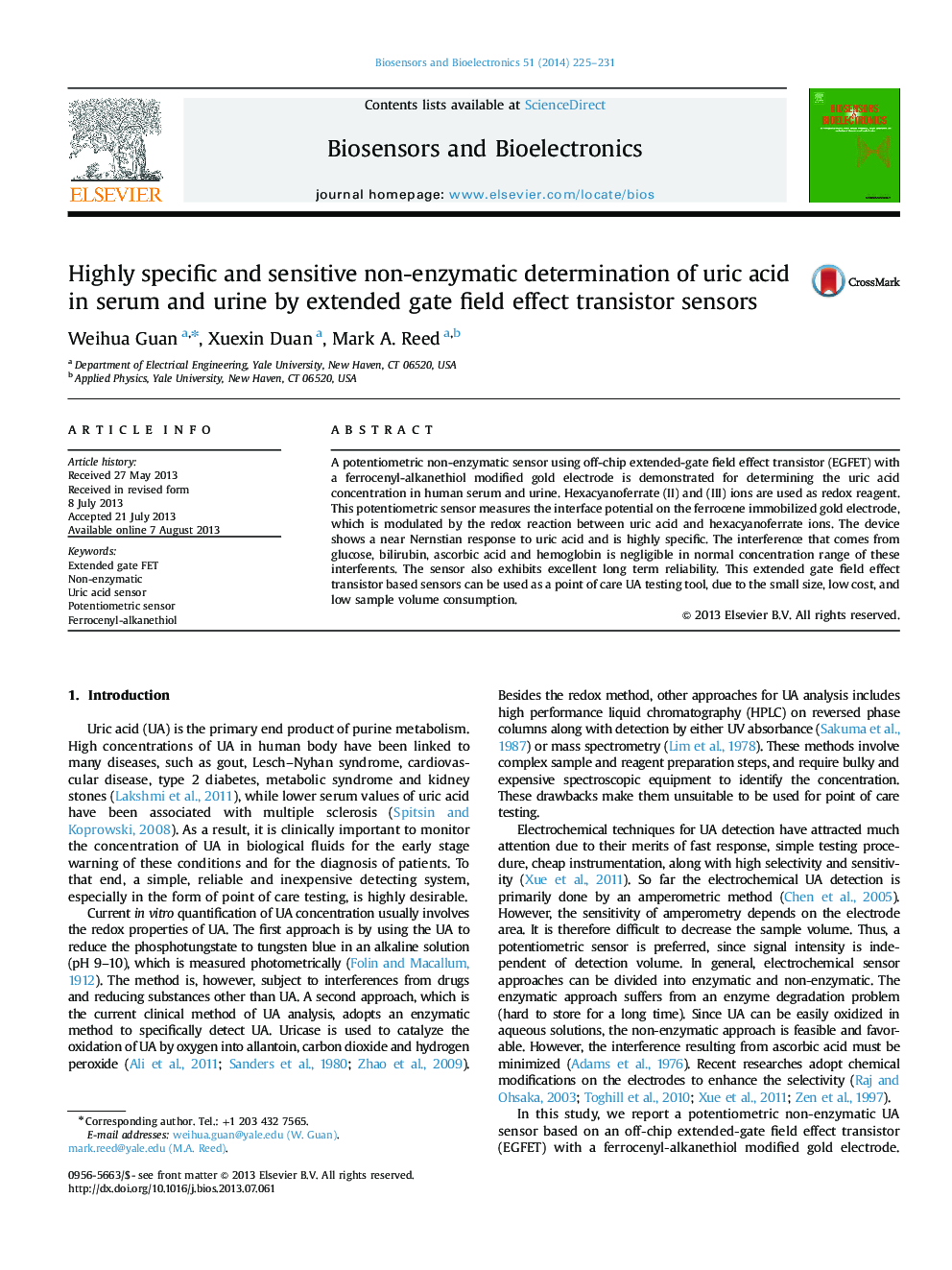| Article ID | Journal | Published Year | Pages | File Type |
|---|---|---|---|---|
| 866570 | Biosensors and Bioelectronics | 2014 | 7 Pages |
•Non-enzymatic potentiometric sensor for uric acid detection in human.•Highly specific and near Nernstian response to uric acid.•Excellent long term reliability for more than half a year.•Common interferences are negligible in normal concentrations.
A potentiometric non-enzymatic sensor using off-chip extended-gate field effect transistor (EGFET) with a ferrocenyl-alkanethiol modified gold electrode is demonstrated for determining the uric acid concentration in human serum and urine. Hexacyanoferrate (II) and (III) ions are used as redox reagent. This potentiometric sensor measures the interface potential on the ferrocene immobilized gold electrode, which is modulated by the redox reaction between uric acid and hexacyanoferrate ions. The device shows a near Nernstian response to uric acid and is highly specific. The interference that comes from glucose, bilirubin, ascorbic acid and hemoglobin is negligible in normal concentration range of these interferents. The sensor also exhibits excellent long term reliability. This extended gate field effect transistor based sensors can be used as a point of care UA testing tool, due to the small size, low cost, and low sample volume consumption.
